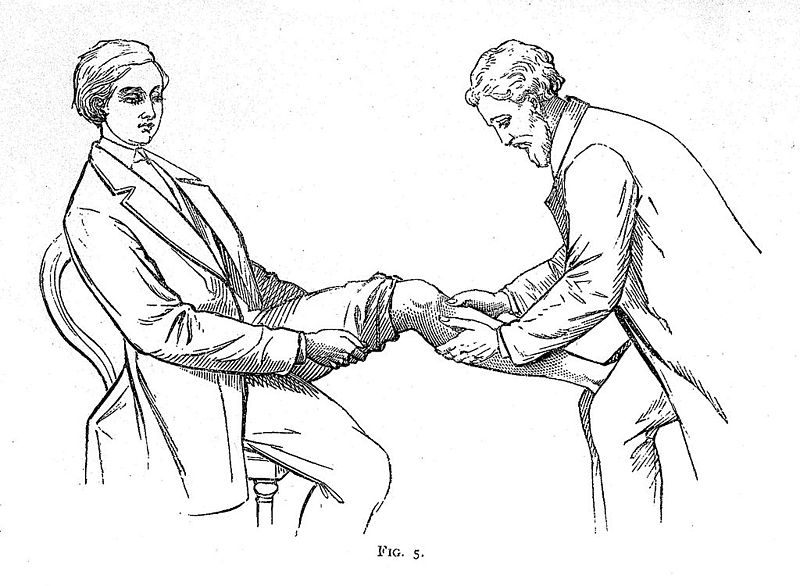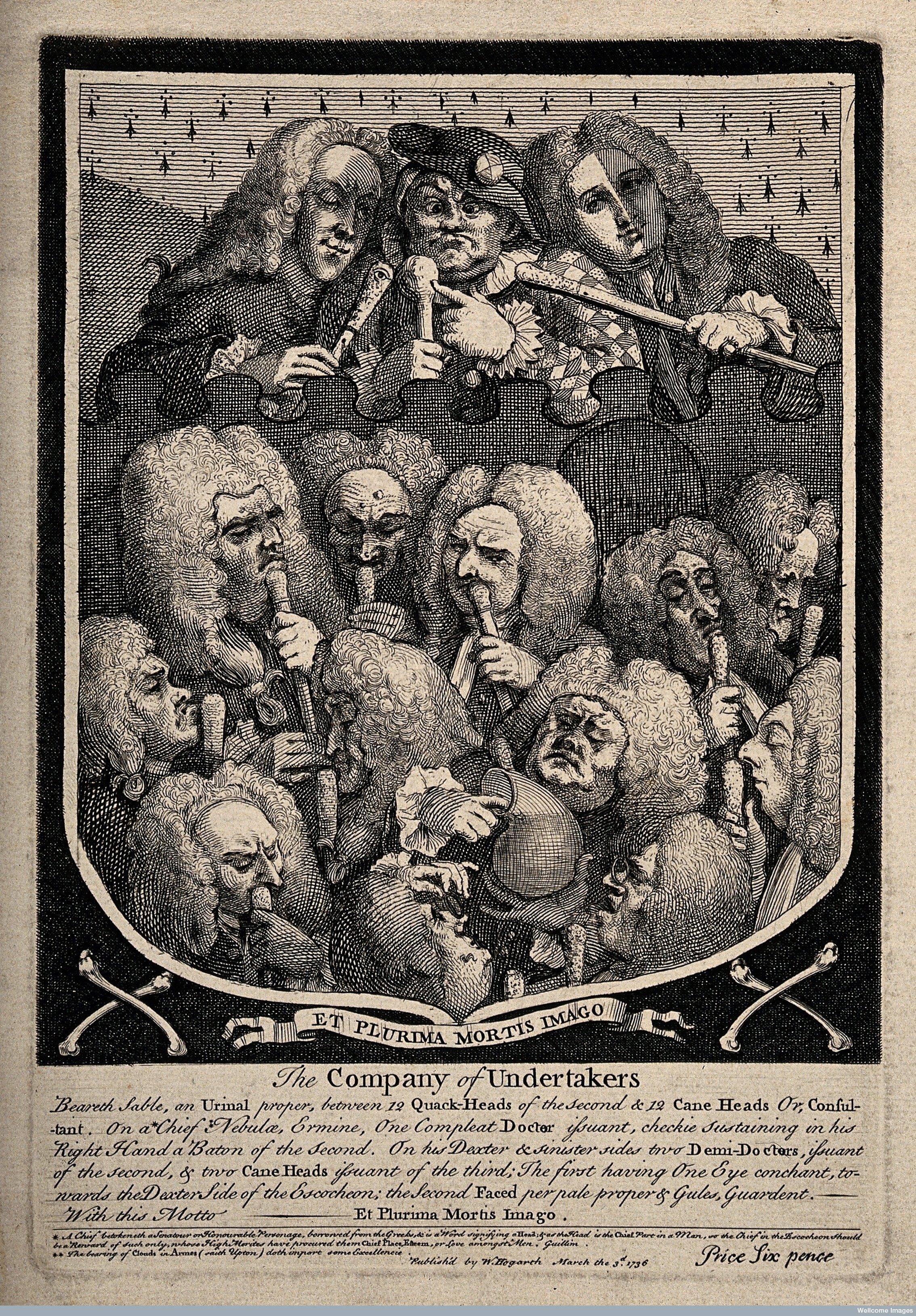The Rapid Rise and Spectacular Fall of London’s Greatest Bonesetter
Sarah “Crazy Sally” Mapp led a highly unusual life.

It was along the Old Kent Road, somewhere between the town of Epsom and London, that a mob of 18th-century rabble rousers thought they spotted one of King George II’s hated mistresses riding in a carriage, and decided to harass her. But as the crowd gathered around the transport, a large, imperious, and possibly drunk woman leaned out to give them hell, shouting, “Damn your blood, don’t you know me, I am Mrs. Mapp, the bonesetter.”
Recognizing her as a respected bonesetter, or shape-mistress, according to a passage in the 1874 collection The Funny Side of Physic, the crowd cheered in delight.
Thus was the life of Sarah “Crazy Sally” Mapp, a remarkable woman who was known for her acid tongue and for her ability to shove bones back into place. Before the rise of contemporary fields such as orthopedics, the practice of bonesetting was common, and typically involved strong but formally untrained tradesmen who would reset broken, slipped, or dislocated bones and joints using brute force. The skill was often, as in Mapp’s case, passed down among family members. Her father, John Wallin, shared his bonesetting skills with his daughter, allowing her to fill in when he wasn’t available. Eventually her skills surpassed even her father’s.
Known for her temper and brash demeanor (as well as her drinking), Sally often got into fights with her father as she got older. According to a short account of her life in the 1824 book The Cabinet of Curiosities: Or, Wonders of the World Displayed, it was after one such row that she struck out on her own, taking the skills she’d learned and starting her own traveling practice. Leaning into her reputation for bombastic behavior, she operated under the name “Cracked Sally—the One and Only Bone-setter.”

Sally eventually gained a reputation for her successful techniques and moved her operations to the wealthy resort town of Epsom around 1735. She found a devoted clientele in the horse-racing culture of the town. Local riders were often in need of her services after falling off their steeds.
While in Epsom, Sally’s talents became so renowned that she began traveling to London a couple of times a week, where she would take cases at the famed Grecian Coffee House. According to accounts collected in James Caulfield’s 1824 book Portraits, Memoirs, and Characters, of Remarkable Persons: Vol.4., while on these journeys she would travel in a fancy four-horse carriage, carrying with her the crutches of those she had healed, like trophies. It was during one such trip that she was mistaken for King George II’s mistress.
By 1736, Sally’s rising star was at its apex. The town of Epsom, afraid that she might move on from them, offered her a retainer of 100 guineas a year to continue living and working there. In August of that year, she married her first and only husband, Hill Mapp, despite warnings from friends that he was only marrying her for her increasing wealth. As described in the 1993 book The Alarming History of Medicine, he “beat her for a fortnight, then decamped with her money.”

As if being robbed by her own husband wasn’t bad enough, Mapp would soon face professional obstacles as well. By the mid-1730s, she was being compared to other high-profile “alternative” practitioners of the day, such as Chevalier John Taylor, a showboating experimental eye doctor, and Joshua Ward, a chemist and inventor of “miracle” tonics. In 1736, the three were featured as a comic triumvirate in an illustration by William Hogarth, titled “The Company of Undertakers.” In the image, she is portrayed as a hideous caricature with cross-eyes, exaggerated underbite, and holding a long bone, like an ogre with a club.
This portrayal remains the basis for our image of Mapp to this day, continuing a trend of describing her as ugly, overweight, and vulgar. For instance, in the 1957 essay “Quacks Through the Ages,” she is described as someone whose “appearance and language were equally vile.”
Still, the reported effectiveness of her treatments often kept her a step of respectability above the others. For example, she earned the respect of Sir Hans Sloane, then the president of the Royal College of Physicians, after correcting his niece’s skeletal issues. And her fame often saw her referenced favorably in press, poetry, and plays. As described in another account collected in Portraits, Memoirs, and Characters, of Remarkable Persons: Vol.4., Mapp and Taylor attended a comic play called The Husband’s Relief, which inspired the following epigram:
“Both Ward And Taylor thought it hurt their fame;
Wonder’d how Mapp cou’d in good humour be-
Zounds! cries the manly dame, it hurts not me,
Quacks without art may either blind or kill,
But demonstration shews that mine is skill.”
Ultimately though, a growing backlash against quackery combined with Mapp’s increasing drunkenness led to a sharp decline in business. By the end of 1737, she was destitute, and died in her home in London’s then-seedy Seven Dials area. In a report a week after her death, Mapp was described as “so miserably poor, that the parish was obliged to bury her.”
Despite her tragic end, Mapp left her mark on history as an unforgettable figure who used her strength to excel in a male-dominated field. She refused to play the part of the delicate woman, even as her hard living contributed to her eventual downfall.
























Follow us on Twitter to get the latest on the world's hidden wonders.
Like us on Facebook to get the latest on the world's hidden wonders.
Follow us on Twitter Like us on Facebook